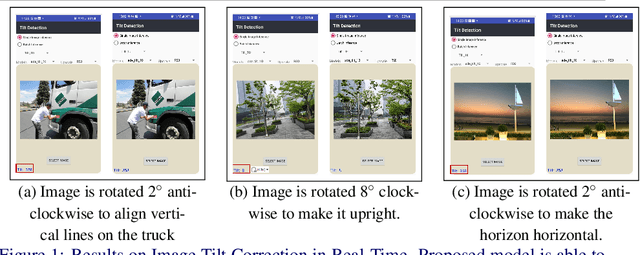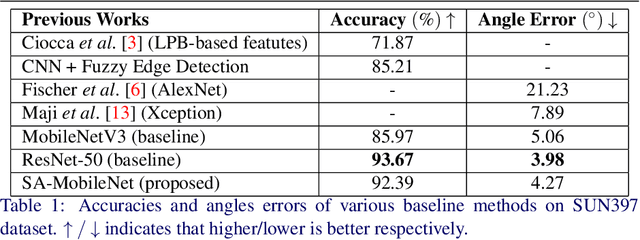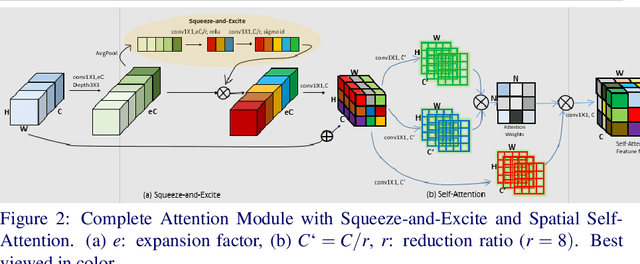A Simple Approach to Image Tilt Correction with Self-Attention MobileNet for Smartphones
Paper and Code
Oct 31, 2021



The main contributions of our work are two-fold. First, we present a Self-Attention MobileNet, called SA-MobileNet Network that can model long-range dependencies between the image features instead of processing the local region as done by standard convolutional kernels. SA-MobileNet contains self-attention modules integrated with the inverted bottleneck blocks of the MobileNetV3 model which results in modeling of both channel-wise attention and spatial attention of the image features and at the same time introduce a novel self-attention architecture for low-resource devices. Secondly, we propose a novel training pipeline for the task of image tilt detection. We treat this problem in a multi-label scenario where we predict multiple angles for a tilted input image in a narrow interval of range 1-2 degrees, depending on the dataset used. This process induces an implicit correlation between labels without any computational overhead of the second or higher-order methods in multi-label learning. With the combination of our novel approach and the architecture, we present state-of-the-art results on detecting the image tilt angle on mobile devices as compared to the MobileNetV3 model. Finally, we establish that SA-MobileNet is more accurate than MobileNetV3 on SUN397, NYU-V1, and ADE20K datasets by 6.42%, 10.51%, and 9.09% points respectively, and faster by at least 4 milliseconds on Snapdragon 750 Octa-core.
 Add to Chrome
Add to Chrome Add to Firefox
Add to Firefox Add to Edge
Add to Edge